Blue Origin Blue Moon Project: People on the Moon by 2024
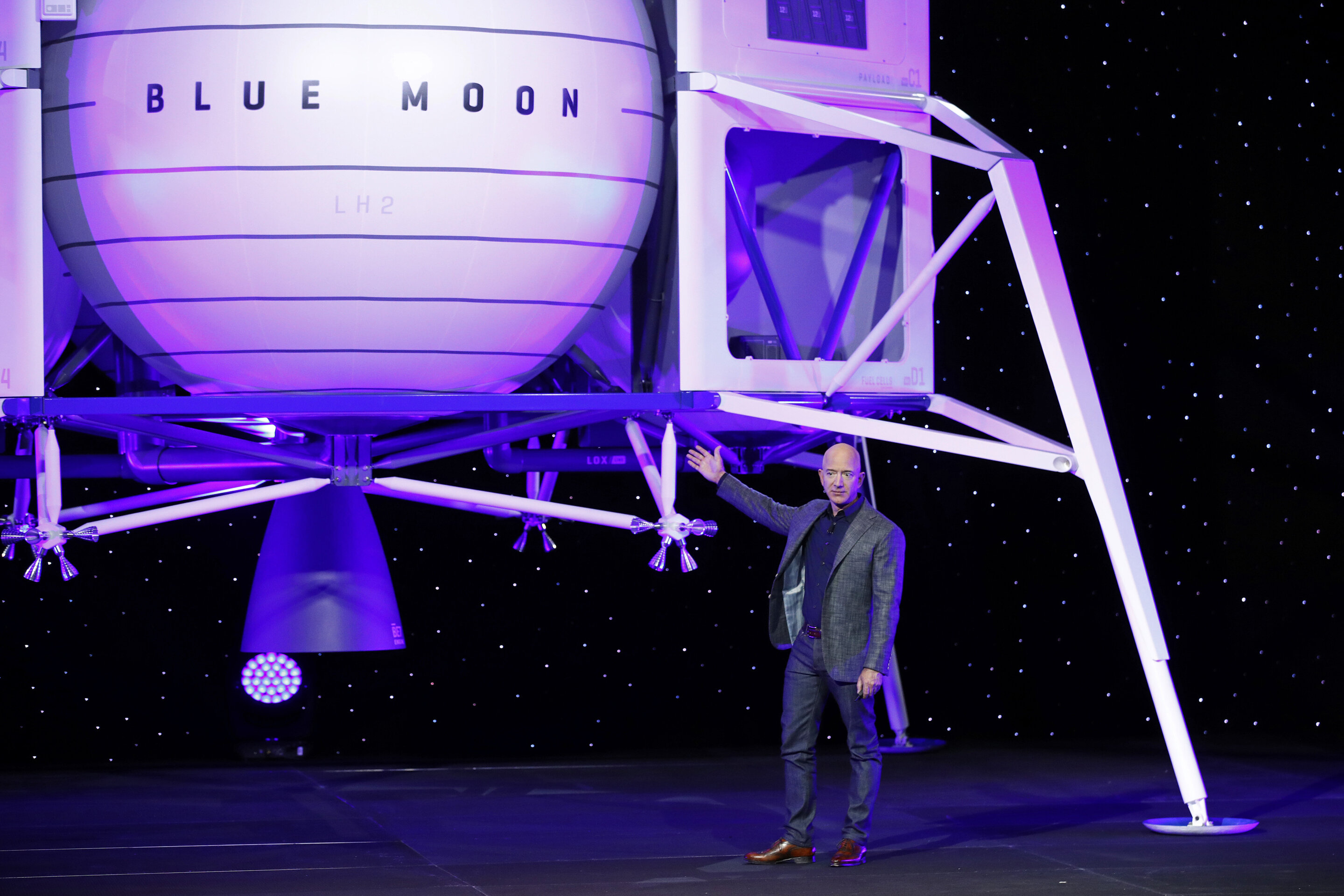
Yesterday, a closed presentation was held, at which the founder of Blue Origin and Amazon, Jeff Bezos, announced that his company's lander would deliver cargo (and possibly people) to the south pole of the moon by 2024.
“This is an incredible device, and it will go to the moon,” he said.
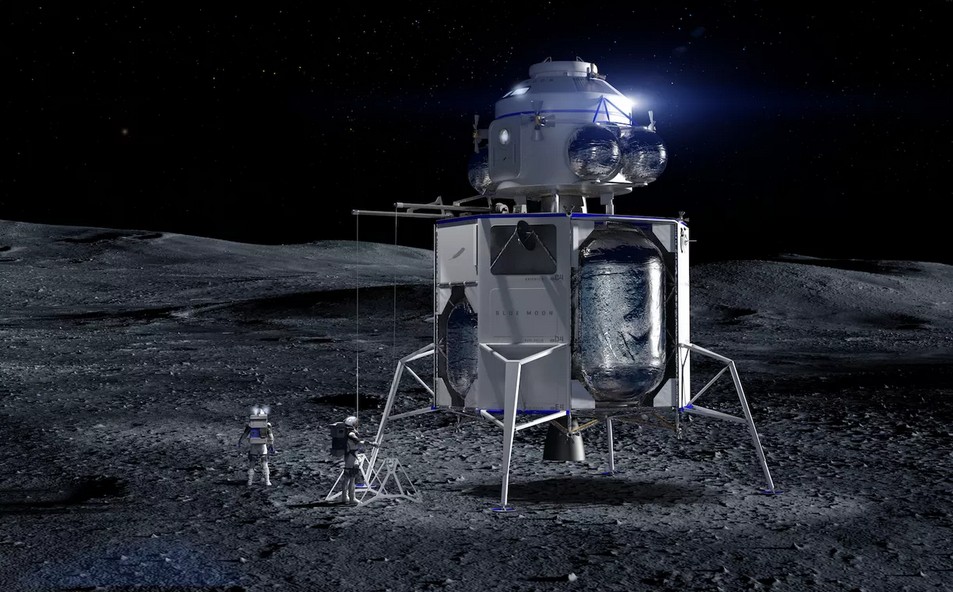
Jeff did not name a specific timeline for the implementation of this project, called "Blue Moon." However, he mentioned that the lander will be ready in time for the implementation of President Trump’s plans to return the Americans to the moon - by 2024:
“We can help meet these deadlines, but only because we started work 3 years ago,” Bezos said. "It's time to return to the moon, this time to stay."
For the first time, the Blue Moon project became known on March 2, 2017 from a publication in the newspaper The Washington Post, which also belongs to the businessman. On April 26, in anticipation of the presentation, Blue Origin published a snapshot of the Endurance vessel by Ernets Shackleton, in which he and his crew tried to get to the Antarctic. As it became known from the presentation itself, the goal of the flight of the first lander should be the homonymous 21-km lunar crater - Shackleton. It has a depth of about 4.2 km and is located in close proximity to the South Pole of the Moon.

The lander will be able to deliver to the moon up to 3.6 tons of cargo, with a loaded mass of about 15 tons in the base case, and up to 6.5 tons of cargo in a manned version with larger tanks. Hydrogen and oxygen will be used as fuel, which in the future they plan to extract from deposits that are at the bottom of this crater - thanks to its high walls, the rays of the Sun never reach its bottom, due to which the water ice from the near-surface layers of the crater almost did not evaporate. It is also planned to use hydrogen fuel cells as an energy source for the device, which should allow it to survive a two-week moonlit night if necessary.

The manned vehicle provides both an unmanned and a manned version: in the first case, containers for cubesat (which can be dropped in the orbit of the moon) will be installed on it, and several lunar rovers (which will descend to the surface using cables), in the second case, a sealed take-off device will be placed on top of the device. The landing engine will use the new engine of the company - BE-7 - producing about 4.5 tons of thrust and capable of deep throttle as the main engine.
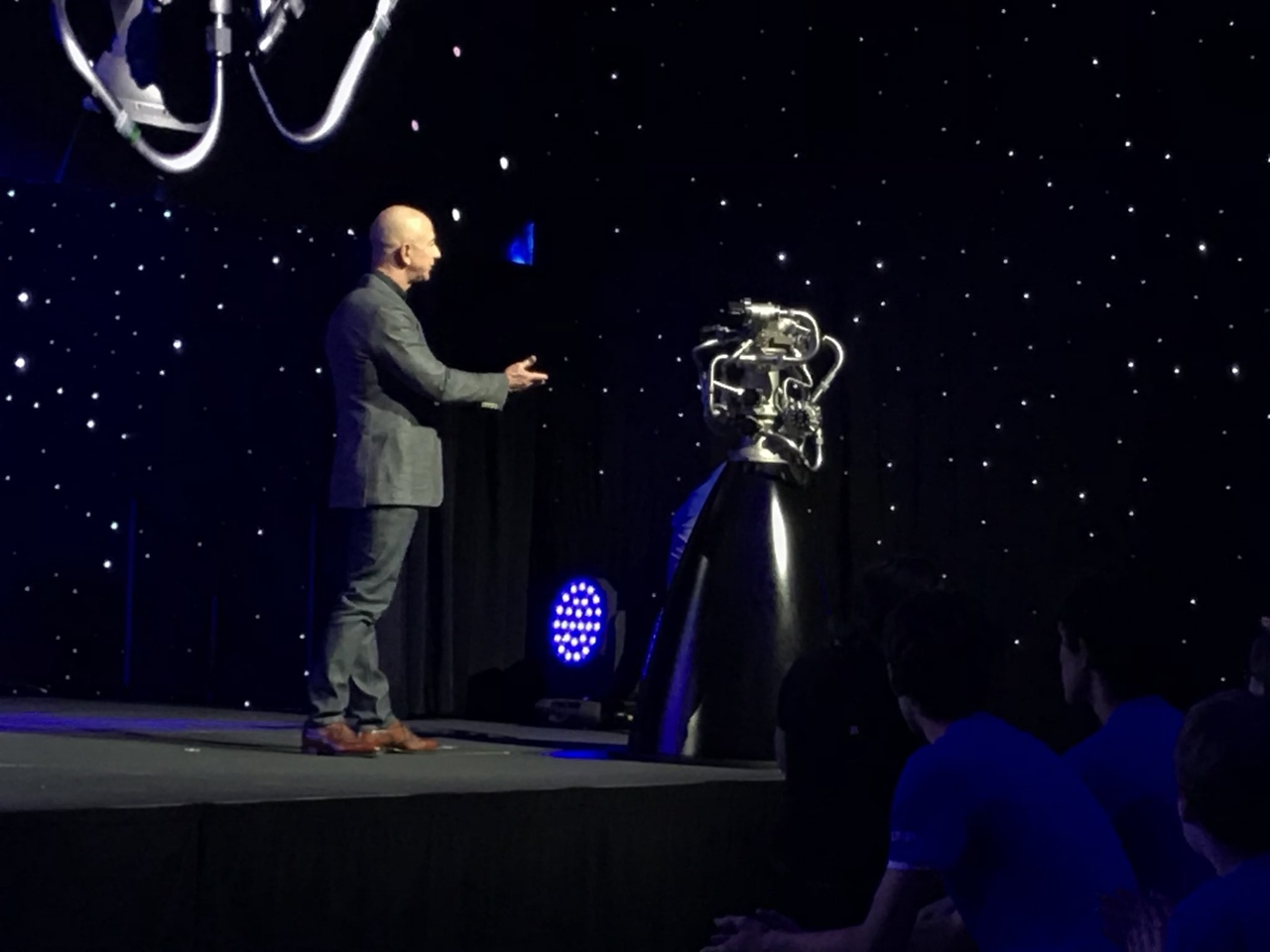
“We are going to conduct its fire tests for the first time this summer,” Bezos said. “The only reason we can do this is because we have been working on it for 3 years.”
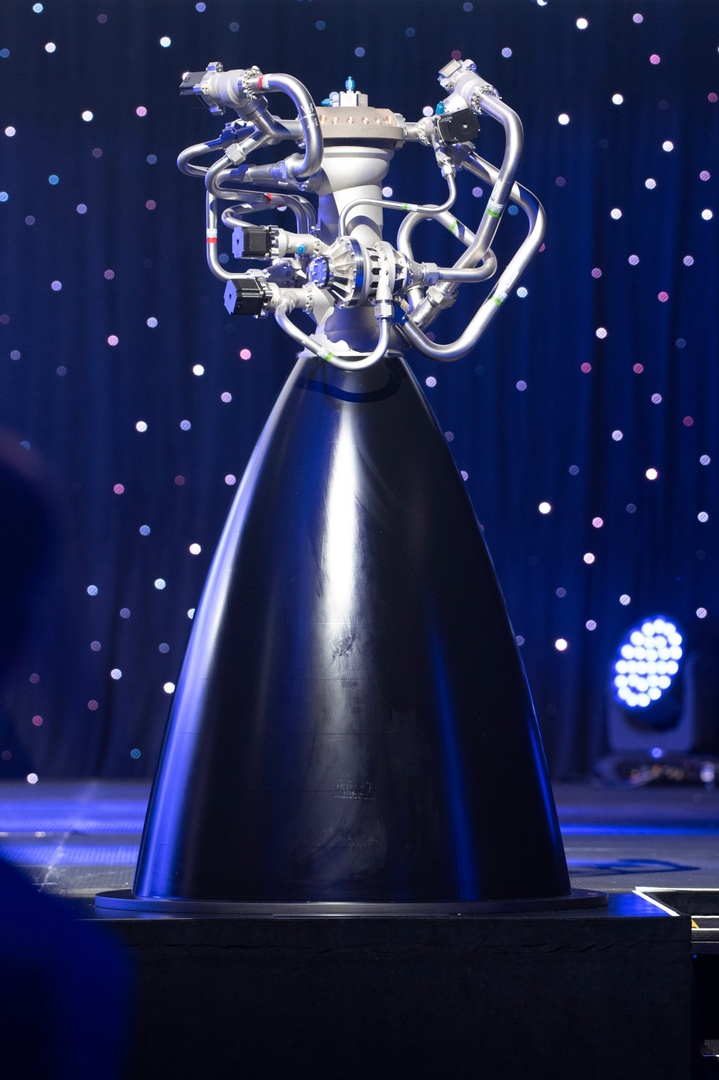
According to sources in the company, the lander went through several redesign cycles before taking on its current form. Blue Origin also assisted NASA in this work, from which they received two grants under the Tipping Point program: the first was received for cryogenic liquid fuel management technology, and the second for testing landing technology, including lidars and height sensors. The firm also plans to test them on its New Shepard suborbital rocket.
During the presentation, Jeff Bezos also confirmed his previous statements about the flight of the first customers to the New Shepherd this year, as well as the launch of the New Glenn orbital rocket by 2021.

Blue Origin previously submitted an application to the NASA competition to create a lunar lander, the deadline for which was set on March 25, 2019 - the day before Vice President Michael Pence's speech about the Americans returning to the moon by 2024. After that, NASA had to radically change this competition, including the development of both the landing and take-off devices, since the previous schedule provided for landing only by 2028, and without fundamental changes, NASA could not meet the deadline announced by the vice president. So far, the new conditions for the NASA contest are only being prepared, but you can be sure that Blue Origin will participate in it with its landing and take-off device.
According to the current Blue Origin development schedule, the basic version of the lander will be ready to fly to the moon in 2023, and it will probably then deliver some equipment to the future astronaut landing site. The full version of “Blue Moon” with landing and take-off devices will be tested in 2024 with astronauts on board, after which people will immediately land on the moon.
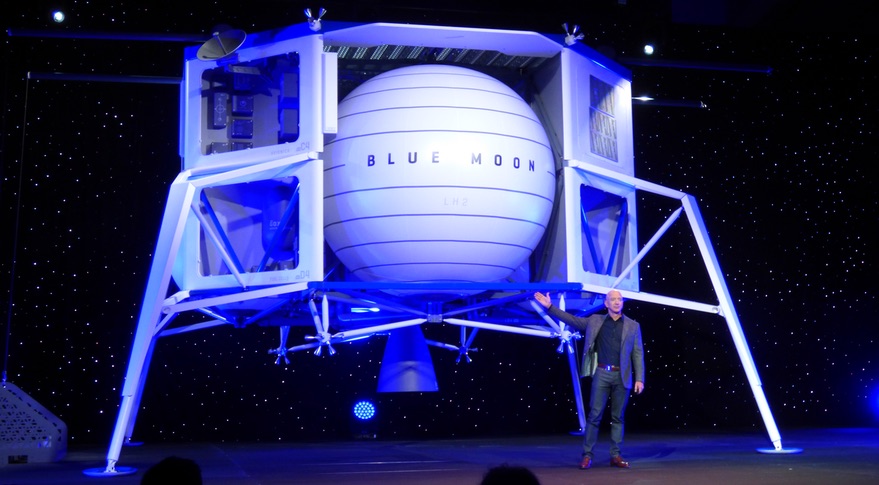
Jeff Bezos also devoted a significant part of the presentation to talking about his long-term vision for the development of space: he said that to provide humanity with electricity, it’s enough now to cover with solar panels an area comparable to the state of Nevada, but due to an increase in electricity demand of about 3% per year after a couple of centuries, the entire surface of the planet will not be enough for this. If people do not begin to expand beyond the boundaries of the Earth into the solar system, then at some point, humanity will encounter the finiteness of resources and energy on Earth.
“This is the way we will go. And this is the first time that could lead to your grandchildren living worse than you, ”Bezos said.
In the continuation of the conversation, he said that in the future, heavy industry will need to be taken outside the Earth, and that millions of people will live and work in space in the future. This vision includes at this stage in history the creation of what Bezos called the “infrastructure” necessary for the cost-effective work of space entrepreneurs. “The task of this generation is to build a road into space so that future generations can reveal their creative abilities,” he said. “Big things start small.”
Video recording of the presentation.
